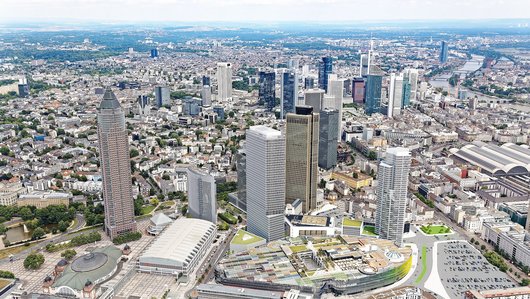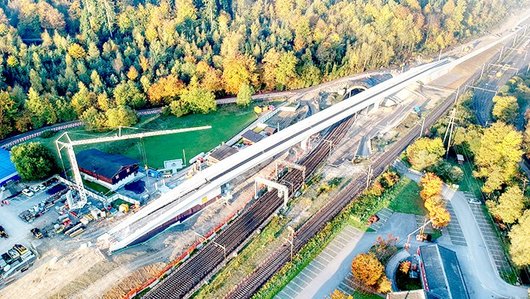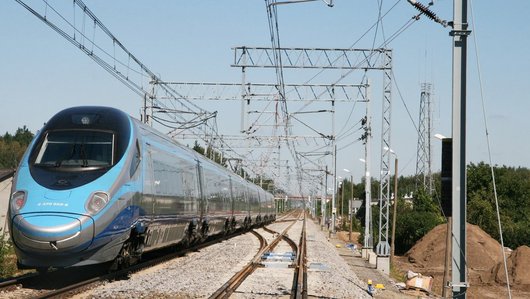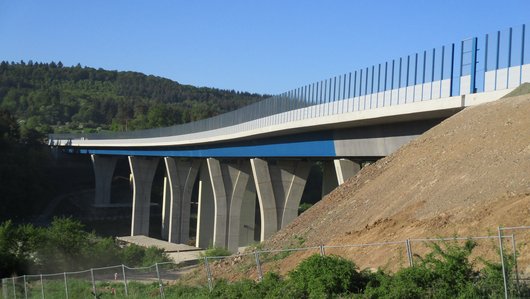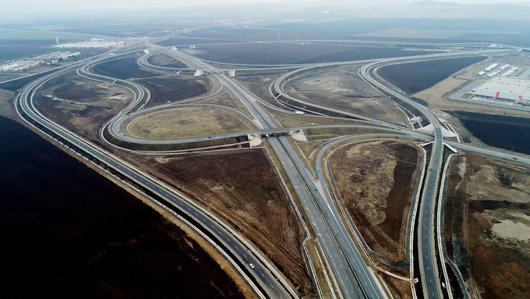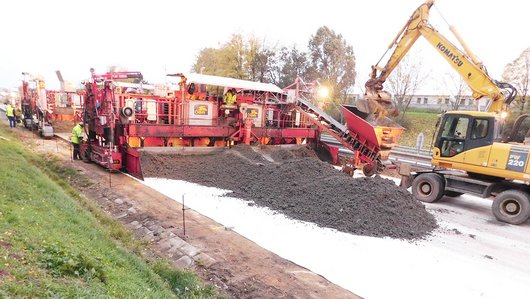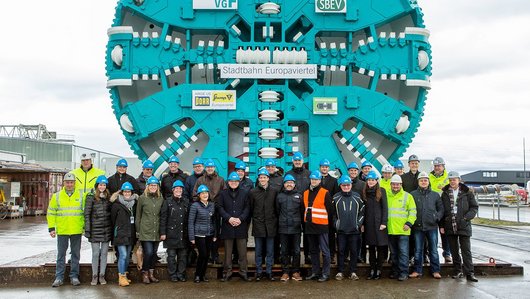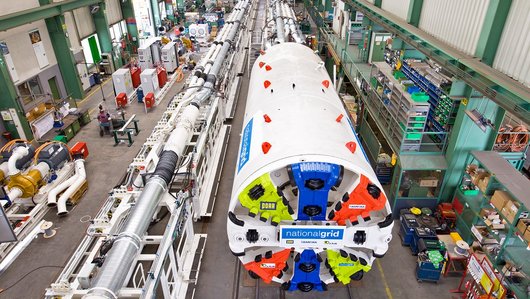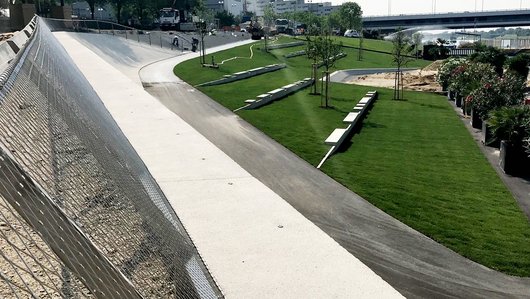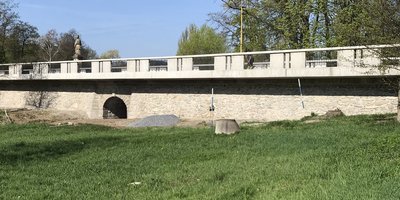
historic bridge
Sedlec-Prčice bridge
PORR renovated an almost 300-year-old bridge between the municipalities of Sedlec and Prčice under the strict supervision of the Czech Monument Care Department.
As the bridge needed to remain open to pedestrians for the duration of the works, PORR also erected an additional aluminium structure. In the course of this project, PORR demonstrated its expertise in the renovation of heritage-protected structures.
-
EmployerStředočeský kraj
-
ContractorPORR, a.s.
-
ArchitectPONTEX s.r.o.
-
Order typeGeneralunternehmer
-
Project typeCivil engineering/infrastructure . Bridge construction
-
Project scopeRenovation of a historic stone bridge in a municipal area
-
Order volume28 million Czech Koruna (1.1 million euros)
-
Construction start04/2017
-
Construction end05/2018
Background
In 2016, Středočeský kraj - the Central Bohemian Region of the Czech Republic - invited tenders for a project to renovate the historic bridge connecting the hamlets of Sedlec and Prčice. The structure, originally constructed between 1815 and 1822, comprises three natural stone arches in Empire style and features two sandstone sculptures of the celebrated Czech sculptor Ignaz Platzer Jr. PORR won through with an offer of CZK 28 million, with the contest decided by the lowest viable tender. Winning the contract was also a matter of prestige for PORR, as it represented a reference project for the renovation of heritage-protected structures. The aim of the extensive renovation work was to extend the bridge’s lifespan and enhance its load-bearing capacity.
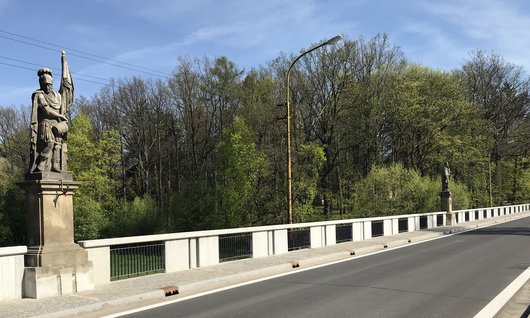

Challenging requirements
Since the last comprehensive renovation in the 1950s, the bridge had been neglected and not sufficiently maintained. Its technical condition was similarly poor. Examinations of the bridge’s structure by the client showed considerable road damage, crumbling reinforced concrete rails and significant water ingress into the bridge’s structure. It also became apparent that low-quality stone from the surrounding region had been used in its construction. The identified defects had negative implications both for the bridge’s lifespan and its load-bearing capacity.
PORR was able to extend its lifespan by replacing the bridge equipment. The road surface and, above all, the ageing reinforced concrete rails were replaced and fully functional bridge draining systems were installed. This work involved installing new parapets, bituminous waterproofing and new composite panels, while the natural stone masonry was also renewed in places. All work was carried out under the supervision of the Czech Monument Care Department and subject to the condition that the bridge remain open to pedestrians for the duration of the renovation work. To this end, a lightweight aluminium bridge structure was erected to allow pedestrians to traverse the construction site and the Sedlecký potok stream.
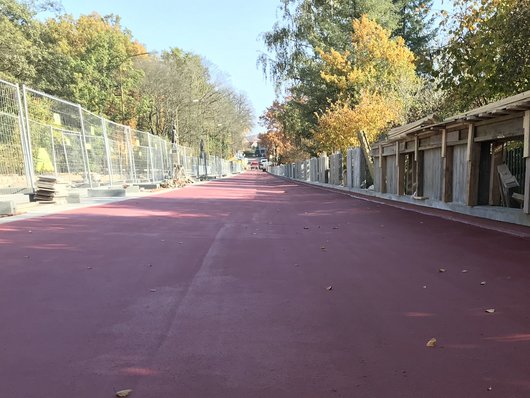

Inspections showed road damage, crumbling reinforced concrete rails and heavy water ingress into the bridge’s structure.
Elaborate surface treatments
The first construction phase saw the bridge surface removed. The carriageway surface was broken up and the pavements and kerbs were dismantled. Work then took place to renovate the concrete upper faces of the arches with a new surface drainage system between the revetments and parapet walls. A reinforced concrete slab of concrete quality C30/37 XF3 was laid over the revetments and between the retaining walls. To prevent deterioration,the surface of the right-hand wall – smoothed out with mortar and concrete – was coated with a layer of expanded polystyrene. On the left-hand side of the wall, supports were inserted for the end profiles as the Monument Care Department specified that the existing stonework was not to be dismantled. PORR fulfilled this technical requirement by erecting scaffolding to support the arches along the full length of the bridge.
The bridge’s composite panel was realised with a roof-shaped transverse gradient of 2.5% and in varying thickness: 341mm at the centre line of the bridge, 250mm in the channel area and 200mm in the end areas. Beneath the bridge’s composite panel, a 15cm-thick bottom concrete layer was applied on top of the compacted frost-proof fill. On top of the bridge’s composite panel, the bituminous-sheeting moisture proofing was applied on top of a sealing layer. The drainage of the bridge’s composite panel uses a drainage channel and a pipe system connected to the kerb drainage system’s collecting pipe. The edges of the reinforced concrete panel were fitted with reinforced concrete covers anchored directly in the bridge’s carriageway slab. The carriageway slab and the covers feature expansion joints and elastic shrink joints every 15m.
The watchful eyes of the Monument Care Department
Following installation of the sealing system, kerb drainage points were installed at 10m intervals; like the granite waterspouts, they had to be approved by the Monument Care Department. The same applied to the reinforced concrete rails erected on top of the reinforced covers. A prototype was presented to the Monument Care Department to demonstrate the steel rod interiors. PORR realised a three-layer asphalt carriageway between the kerbs. The pavements feature natural stone paving in a sand bed, with a transverse gradient of 2.5%.
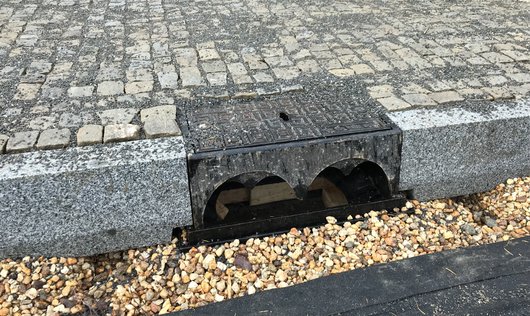

After approval
Once work to install the road surface had been completed and the bridge recommissioned, the arch-supporting scaffolding was dismantled and the arch structures and supporting walls treated with high-pressure water-jet cleaning. The water pressure of 1,200 bar was tested in advance on reference surfaces. In the course of this work and further necessary examinations, cavities were identified in the arches and subsequently filled in using a mortar injection procedure. The natural stone masonry was grouted to a depth of 80mm. The jointing - once again in coordination with specialist heritage officers - was carried out using lime mortar with max. 5% white cement additive for stones made of soft and porous rock and max. 10% for those made of igneous rock. The visible areas of jointing were neither mechanically smoothed nor treated in any other way. Instead, the mortar was coloured with sand to match the natural tone of historic mortar. Any missing or weathered parts of the natural stone masonry were repaired using the resulting rubble, while ensuring the joint distribution remained even.
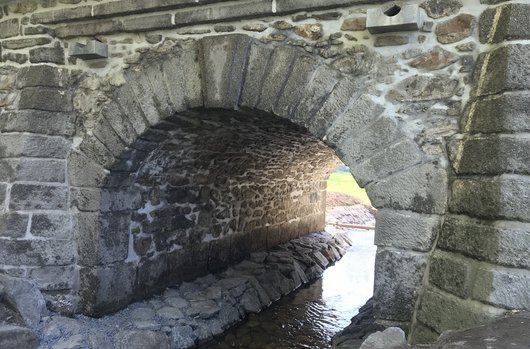

New paving
The final part of the restoration work involved replacing the paving on the floodplain and the paving beneath the bridge. The base of the bridge was also consolidated to prevent the parts of the arches that had been filled in and the abutments from being worn away by standard water flows. Some 3m of paving was laid upstream of the bridge as well as 3m downstream and in the entire riverbed beneath the bridge. The entire area covered by the stream during flooding was also cleaned up. Concrete sleepers were used to pave the riverbed.
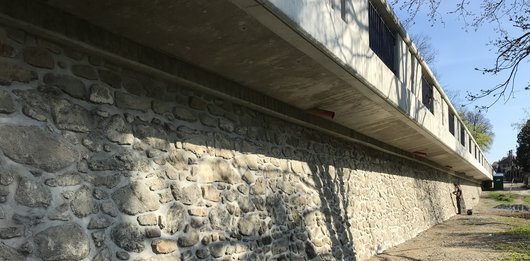

Technical data
-
Total bridge length194,50m
-
Bridge height4,20m
-
Bridge width10,90m
-
Volume of new concrete structures1.200m³

